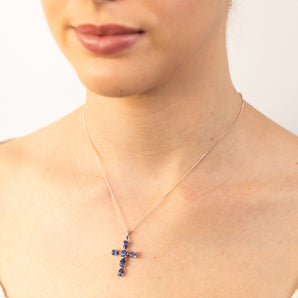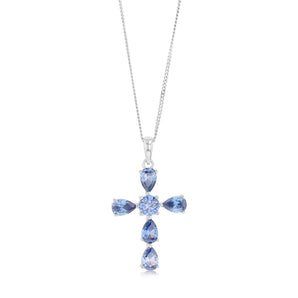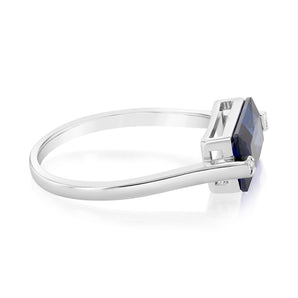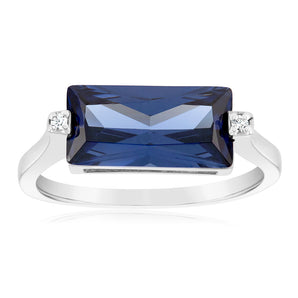December Birthstone
There are not one, not two but a whopping three gemstones for the December birthstone. They are the topaz (also one of the November birthstones), turquoise and tanzanite.
With a beautiful blue-green hue, turquoise gemstones have an appearance that is reminiscent of the crystal, calm waters of the Mediterranean. Highly prized for centuries, the stone often appears in silver jewellery including rings, pendants and earrings.
Tanzanite gemstones, on the other hand, are a deep shade of purple that is similar to the hue that flowers such as irises and violets possess. The stone comes in many varieties and is often mistaken for a sapphire.
Read on as we unpack all there is to know about the intriguing December birthstones.
OVERVIEW OF THE DECEMBER BIRTHSTONE:
- Physical components & meanings of turquoise
- The history of turquoise
- Where do turquoise stones come from?
- Our favourite turquoise jewellery picks
- Physical components & meanings of tanzanite
- The history of tanzanite
- Where do tanzanite stones come from?
- Our favourite tanzanite jewellery picks
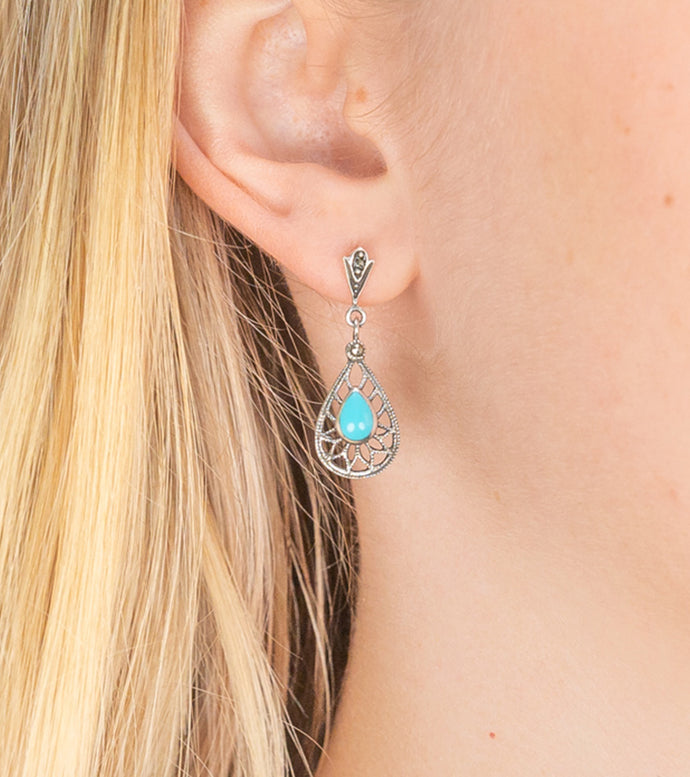
PHYSICAL COMPONENTS AND MEANINGS OF TURQUOISE
The only gemstone to have a colour named after it, the turquoise is a semi-precious stone. Their colour can range from a deep blue to an almost jade green tone that is similar to the colour of grass. Many turquoise gems will often feature veining on the surface of the stone.
Referred to as the sky stone' by the Tibetan and Nepalese people who believed that the stone came down from the heavens, turquoise gemstones are thought to have many meanings and abilities. Not only are the stones believed to symbolise wisdom, tranquillity and good fortune, but they are also said to provide the wearer with protection. People would even wear turquoise stones around their necks, believing that it would prevent injury if they fell off their horse. The stone is also believed to promote leadership in the workplace while also assisting with career progression and protecting from poor investment decisions...So perhaps look into investing in one of these bad boys before trading on the stock market.
A mineral consisting of copper aluminium phosphate, turquoise stones form when a small amount of water (containing minerals such as copper and aluminium) leak into a rock-causing a chemical reaction. It later forms veins, which later turn into a clump of turquoise. Ranking 5th or 6th on the Mohs Scale of Hardness, turquoise stones are a lot less delicate compared to other gemstones, however, it is relatively durable when dropped and when exposed to light. Like a sponge, turquoise stones are very absorptive and can soak up anything from water to oils which can oxidize the minerals within the stone. As a result of this oxidation, turquoise can change colour over time.
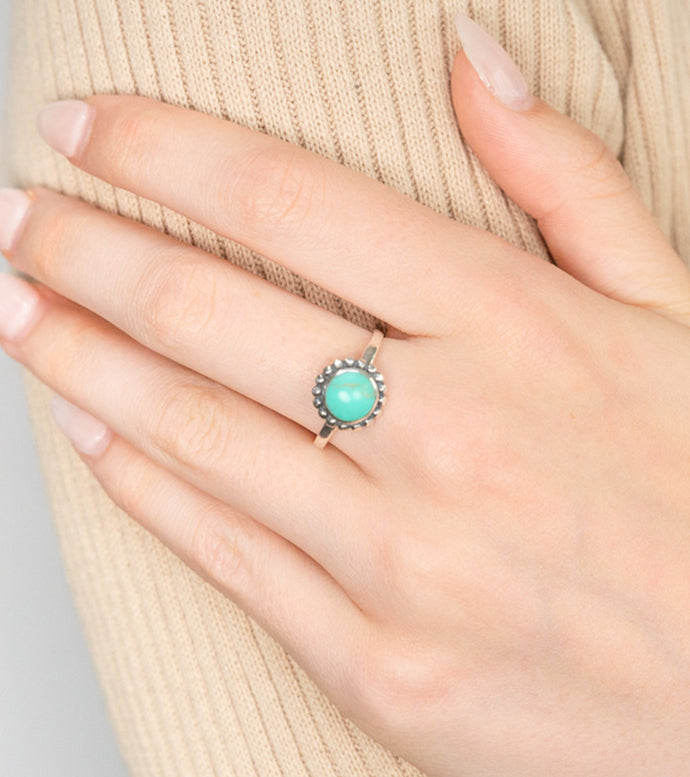
THE HISTORY OF TURQUOISE
Perhaps one of the oldest gemstones in the world, turquoise stones has been prized by cultures all over the globe for centuries. Rulers in Ancient Egypt layered themselves in turquoise jewellery, while early civilisations in China would carve drawings and symbols into the light blue stone. Turquoise was even the national gemstone of Tibet where they considered the stone to be a source of good health and good fortune. The Tibetans loved the stone so much that jade green varieties of the gemstone are even referred to as a Tibetan green turquoise. For Native Americans in the Southwestern region of the US, turquoise was a ceremonial gem and a medium of exchange, they even used the stone in jewellery and amulets (which are better known as charms). The Native American Apache tribes believed that if they attached turquoise to their bow or firearm it would help increase the shooter's accuracy. The tribes also adorned the stone in their ceremonial masks, shields and knives, believing it would provide them protection.
Turquoise jewellery would make a return to prominence during the Georgian Era where women adorned locket pendants that featured the gemstone. Queen Victoria was also known for her fondness for the stone. It is thought that she gifted each of her ladies-in-waiting turquoise rings upon her wedding to Prince Albert. Miniature portraits of the queen were even set with tiny turquoise stones. During the Victorian era, turquoise stones were commonly set into snake motif bracelets and necklaces as well as brooches. Many women also wore large drop earrings adorned with stones in this period. Turquoise jewellery would also see a resurgence in the 1960s and 70s when the bohemian style inspired by the Native Americans gained some popularity. The singer Cher was even known for her love of turquoise jewellery during this time, often rocking large necklaces featuring the stone with her sparkling Bob Mackie ensembles.
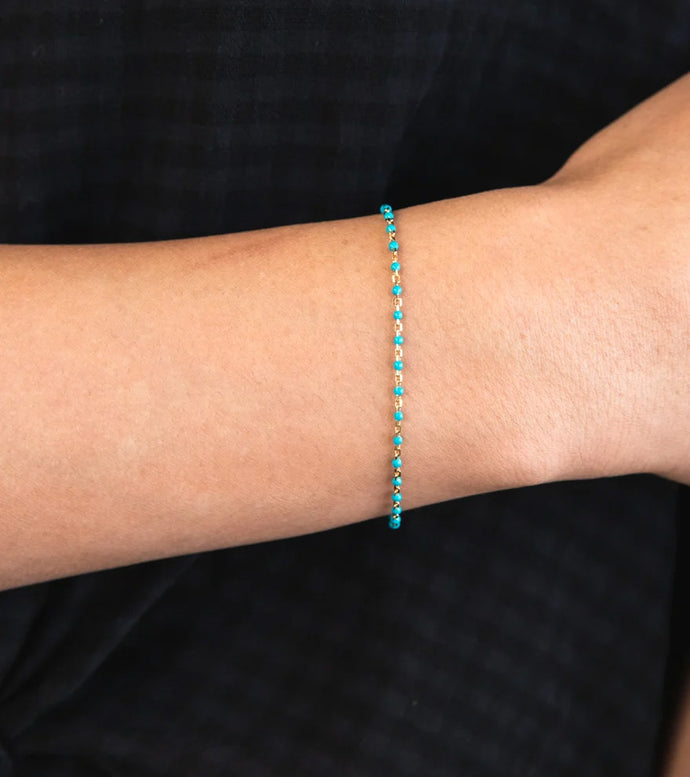
WHERE DO TURQUOISE STONES COME FROM?
Turquoise stones are predominantly found in places with a hot-dry climate. A majority of the world's turquoise stones are mined in the United States, Mexico, Iran, China, Chile, Tibet and India. Arguably, the world's biggest exporter of the stone in North America. Their largest mine is the Kingman Turquoise Mine which is located in Golden Valley, Arizona.
Discovered by the Native Americans 1000 years before European settlers arrived in the United States, the mine is one of the oldest in the world. The world's largest turquoise stone was found in Shiyan, which is China's Hubei prominence. Weighing over 215 kilograms, the stone was officially recognised as the world's largest turquoise by the Guinness World Records in 2009. It is currently housed in the Shandong Tianyu Museum of Natural History. This December birthstone is truly one of a kind.
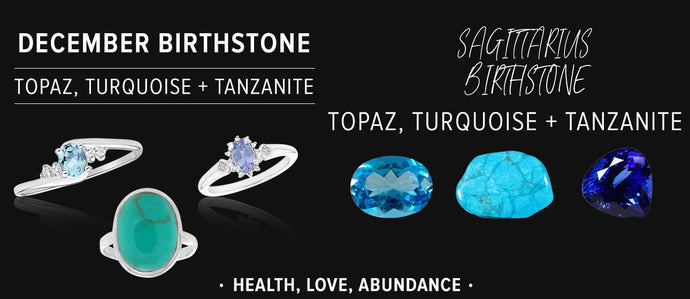
OUR FAVOURITE TURQUOISE JEWELLERY PICKS
Nothing pops in your personal collection quite like sky blue turquoise jewellery. Check out some of our favourite turquoise earrings and more below.
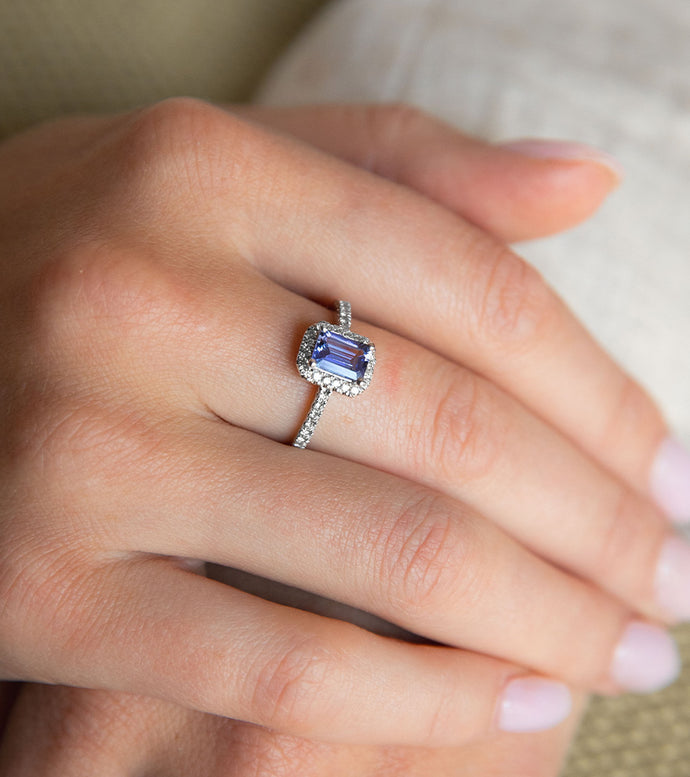
PHYSICAL COMPONENTS AND MEANINGS OF TANZANITE
While other gemstones have been around for thousands of years, tanzanite jewellery stones are practically still in their infancy on the jewellery market having only been discovered in the 1960s. With its rich, purple-blue hue, the stone has quickly become a favourite among fine-jewellery lovers.
Composed of a rare mineral known as zoisite, Tanzanite stones were formed some 585 million years ago as a result of massive tectonic plate activity and intense heat in an area that would later become known as Mount Kilimanjaro. Its vibrant royal blue and violet tones are caused by traces of vanadium appearing in zoisite. Rarer than diamonds due to their mineral composition and scarcity, tanzanite stones rank 6th or 7th on the Mohs scale of Hardness. This makes them extremely precious and delicate. Despite appearing in a predominantly purple-blue hue, tanzanite stones can also appear in pink and green.
Tanzanite stones have garnered many meanings in their relatively short lifetime. Many believe that the stone can facilitate a higher consciousness while also helping to grow your level of intuition and perception. Some also believe that the stone may aid in improving vitality and detoxifying the body. Many adorn the stone due to the common belief that it provides the feeling of calm to tense situations. Another common belief is that tanzanite's high vibrational energy brings safety and protection while trying to connect with higher realms. The stone is also thought to be good for meditation.
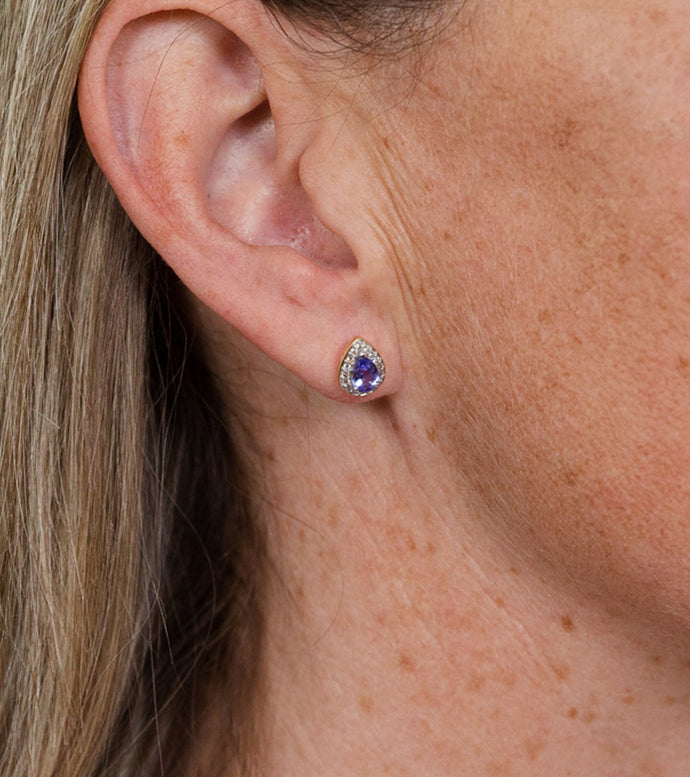
THE HISTORY OF TANZANITE
While other gemstones have been around for thousands of years, tanzanite jewellery stones are practically still in their infancy on the jewellery market having only been discovered in the 1960s. With its rich, purple-blue hue, the stone has quickly become a favourite among fine-jewellery lovers.
Composed of a rare mineral known as zoisite, Tanzanite stones were formed some 585 million years ago as a result of massive tectonic plate activity and intense heat in an area that would later become known as Mount Kilimanjaro. Its vibrant royal blue and violet tones are caused by traces of vanadium appearing in zoisite. Rarer than diamonds due to their mineral composition and scarcity, tanzanite stones rank 6th or 7th on the Mohs scale of Hardness. This makes them extremely precious and delicate. Despite appearing in a predominantly purple-blue hue, tanzanite stones can also appear in pink and green.
Tanzanite stones have garnered many meanings in their relatively short lifetime. Many believe that the stone can facilitate a higher consciousness while also helping to grow your level of intuition and perception. Some also believe that the stone may aid in improving vitality and detoxifying the body. Many adorn the stone due to the common belief that it provides the feeling of calm to tense situations. Another common belief is that tanzanite's high vibrational energy brings safety and protection while trying to connect with higher realms. The stone is also thought to be good for meditation.
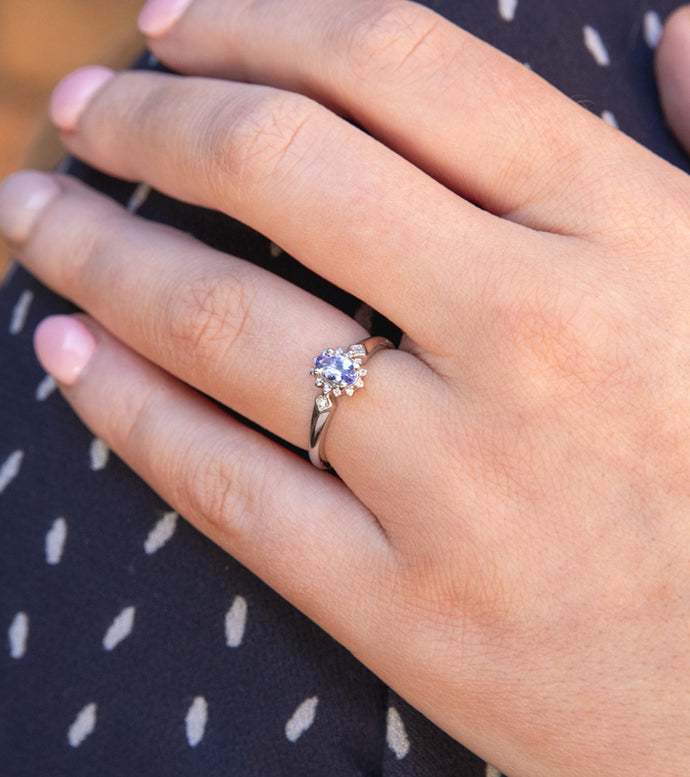
WHERE DO TANZANITE STONES COME FROM?
The world's only known source for Tanzanite is Tanzania, a country in East Africa. The stone is so rare that it is believed that the world's supply will dry up within the next decade or so. This is something that will likely lead to jewellers exploring whether they can produce man-made versions of the stone one day.
The largest tanzanite stone was only discovered in 2020 when local Tanzanian man Saniniu Laizer stumbled across two large stones. One of the stones weighed 9.2kg, while the other weighed 5.8kg. Lazier earned over $4 million for Tanzania's mining industry and planned to use the profits to help fund a school and build a shopping centre in his local community.

OUR FAVOURITE TANZANITE JEWELLERY PICKS
Dive into the deep blue of tanzanite jewellery for a beautiful splash of colour. Fromtanzanite rings andtanzanite earrings totanzanite pendants,tanzanite necklaces and more, take a look at some of our top tanzanite December birthstone picks below.


















